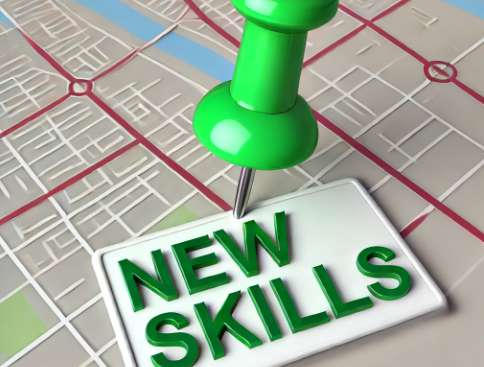
Exploring employee skills is a vast topic, with Google alone showing over 27 million results. With various definitions and approaches, understanding and identifying key skills and competencies can seem overwhelming. Here’s how HR teams can effectively discover, map, and develop skills within their organizations.
Defining Essential Skills: Hard, Soft, and Unique “Mad” Skills
Building a robust skills map starts with understanding the types of skills that employees bring to the table:
- Hard Skills: These are technical, industry-specific skills developed through training, education, or practical experience. Examples include software development, data analysis, and tool proficiency. Hard skills are generally measurable and easy to assess.
- Soft Skills: Often called interpersonal skills, these encompass abilities like communication, problem-solving, adaptability, and leadership. While they can be harder to quantify, soft skills are critical for fostering an adaptable, collaborative work environment.
- Mad Skills: These are unique, unconventional skills that add creativity and innovation to a team. They come from diverse experiences outside of typical work tasks. For example, an employee with a background in storytelling or theater might bring a fresh perspective to projects, enhancing creativity and adaptability.
By mapping hard, soft, and mad skills, HR departments can build a comprehensive skills strategy, giving their organization a competitive advantage.
Understanding Core Competencies in the Workplace
To navigate and leverage skills effectively, it’s essential to grasp the concept of key competencies. According to Larousse, competencies refer to knowledge and expertise that enable effective decision-making. In HR, competencies are often categorized into three main areas:
- Individual Competence: Knowledge and abilities developed by employees through experience and training.
- Collective Skills: The combined strengths of a team, where cohesion amplifies effectiveness.
- Core Competencies: Unique capabilities that give the company a strategic advantage, helping it stand out in the market.
This cohesive structure, where individual skills lay the groundwork for collective and core competencies, is crucial for achieving sustainable growth.
Building a Skills Pyramid
Employee growth and learning are fundamental to developing individual competencies. Training and experience help HR teams identify and strengthen key organizational skills. A structured skills pyramid, combining individual and collective strengths, supports an agile and skilled workforce.
Skills Development: A Pathway to Growth
For HR teams, creating a structured skills development strategy is essential to build resilience, retain talent, and maintain a competitive edge. Consider these methods:
- Training and Upskilling: Offering both structured and experiential learning helps employees expand their hard and soft skills. Upskilling programs, through certifications or courses, are particularly effective in developing industry-relevant competencies.
- Personalized Learning Paths: Using data-driven insights, HR can tailor learning opportunities to each employee’s career path, enhancing engagement and encouraging personal growth.
- Mentoring and Cross-Functional Collaboration: Mentorship and interdepartmental projects enable the sharing of soft and mad skills, fostering an innovative, knowledge-rich culture.
- Internal Mobility: Providing opportunities for employees to move within the organization helps broaden their skill sets, support career growth, and reduce turnover.
By implementing a robust skills development program, HR can ensure their workforce remains adaptable and competitive.
Competence as a Strategic Advantage
A focus on competencies has proven invaluable for many companies:
- Disney strengthened its creative capabilities with acquisitions like Marvel and Pixar.
- Amazon expanded its logistics capabilities with companies like Kiva Systems, advancing automation and operational efficiency.
For today’s organizations, a strategic focus on skill acquisition and development is key to sustained growth.
Identifying Key Skills Across Your Organization
Involving employees in skills identification through self-assessment empowers them to actively participate in their growth. However, it’s crucial to standardize skill terminology to avoid discrepancies (e.g., “project management” vs. “project leadership”) for effective tracking.
Selecting the Right Approach for Skills Management
Depending on time and resources, organizations may consider the following approaches:
- Short-Term: Sector-specific skills repository; however, this may lack personalization.
- Medium-Term: Consulting expertise; this provides an external viewpoint but can be costly.
- Long-Term: Custom, dynamic skills repository; this employee-driven approach adapts in real-time to organizational needs.
A dynamic skills repository powered by HR technology enables organizations to evolve and adapt effectively.
TalentbankAI: Empowering Skills Management with AI
TalentbankAI offers a dynamic, multilingual skills repository integrated with HR data, creating a comprehensive skills map for strategic planning. By involving employees in skill identification and career mapping, organizations gain a continuous, real-time view of available talent.
Leveraging Skills Intelligence for Workforce Strategy
Skills Intelligence leverages data from multiple sources—such as training, projects, and feedback—to offer personalized career paths aligned with employees’ skills and aspirations. Since launching, TalentbankAI has enabled companies like Société Générale to significantly enhance their internal mobility and skill alignment, achieving high employee engagement and a strategic HR advantage.
Future-Ready Skills Mapping for Today’s Agile Teams
As organizations and their teams evolve, skill data management becomes essential. To remain competitive, HR leaders must consider:
- Are skills data current and regularly updated?
- Do systems effectively track soft skills?
- Can gaps be identified and anticipated?
With TalentbankAI, companies stay agile and equipped for the future, aligning talent with strategic goals through intelligent skills and career mapping. Embrace skills management to ensure a dynamic, future-ready organization.





Leave a Reply